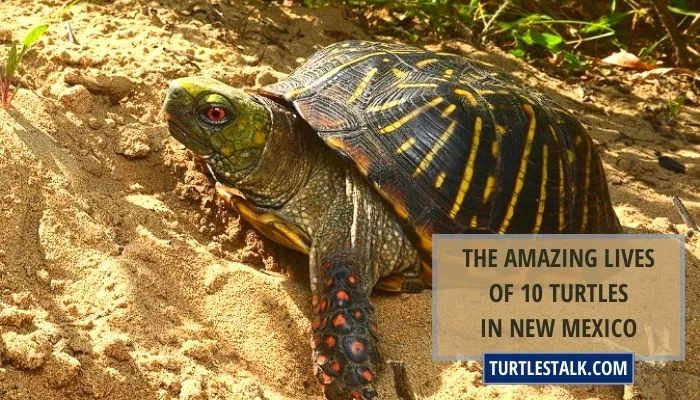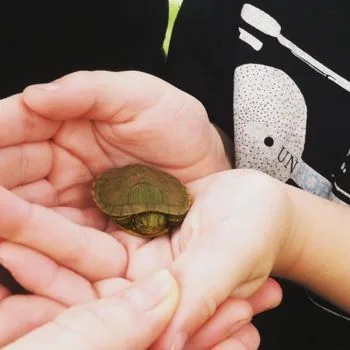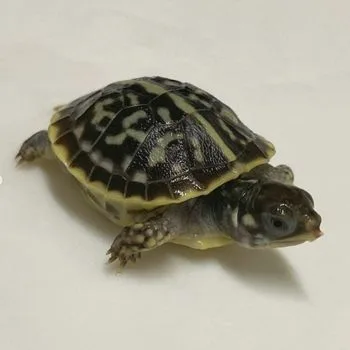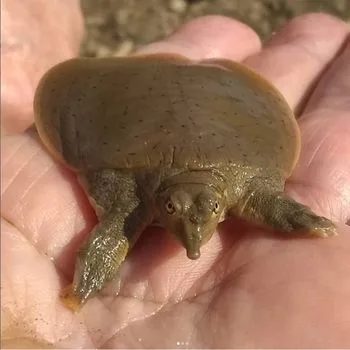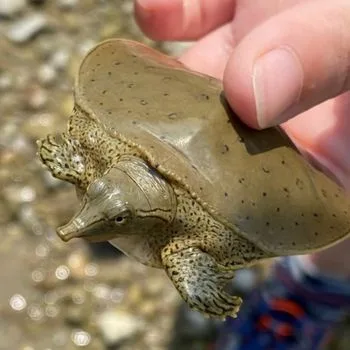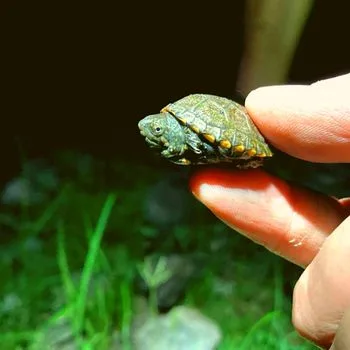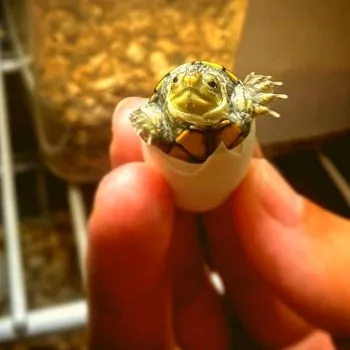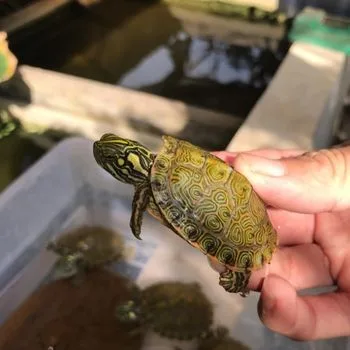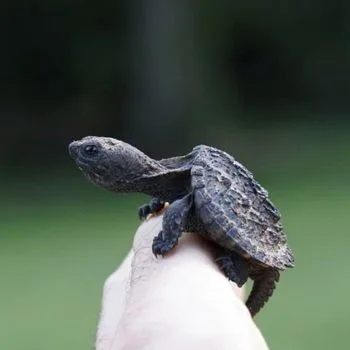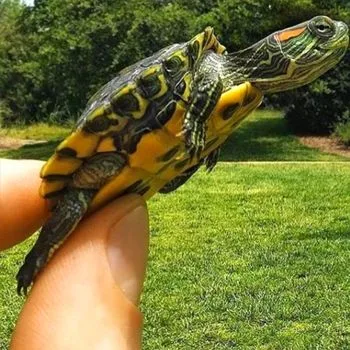The Amazing Lives of 10 Turtles in New Mexico
New Mexico is home to a variety of turtles, both native and non-native species. From the common slider turtle to the rare Sonora Mud turtle, this state has it all!
With eight native species including cooters, box turtles, softshell turtles, painted turtles and even snapping turtles— New Mexico is truly a haven for these beloved reptiles.
And while some of these species are considered vulnerable or threatened due to habitat destruction or human interference, there’s still hope that we can help protect them so they don’t become extinct in our beautiful state. So let’s learn more about the 10 different types of turtles living in New Mexico!
| # | Name | Details | Image |
| 1 | Big Bend Slider (Trachemys Gaigeae) |
| 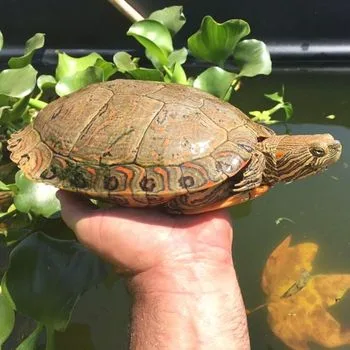 |
| 2 | Ornate Box Turtle (Terrapene Ornata Ornata) |
|  |
| 3 | Midland Smooth Softshell Turtle (Apalone mutica mutica) |
| 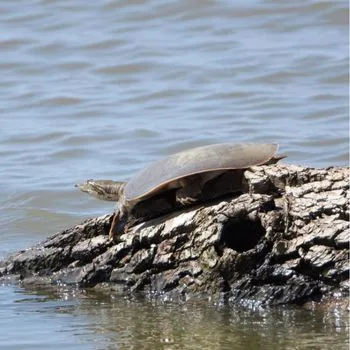 |
| 4 | Eastern Spiny Softshell Turtle (Apalone Spinifera) |
| 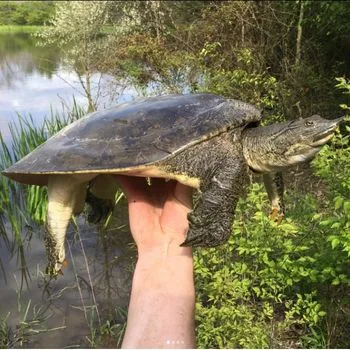 |
| 5 | Sonora Mud Turtle (Kinosternon Sonoriense) |
| 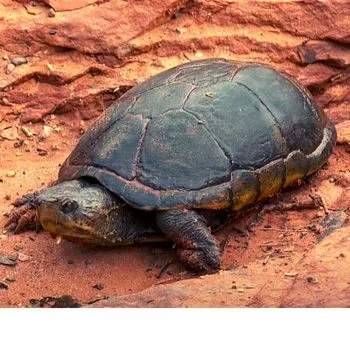 |
| 6 | Yellow Mud Turtle (Kinosternon Flavescens) |
| 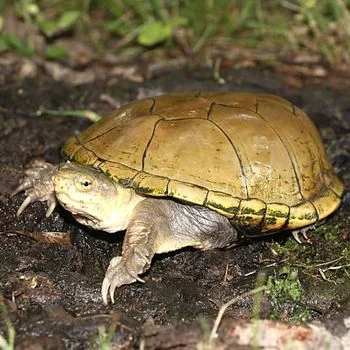 |
| 7 | Rio Grande Cooter (Pseudemys Gorzugi) |
| 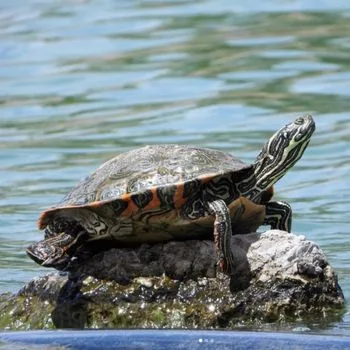 |
| 8 | Western Painted Turtle |
| 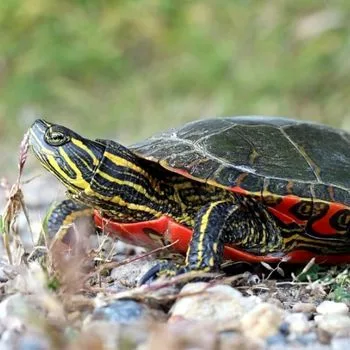 |
| 9 | Common Snapping Turtle (Chelydra serpentina) |
| 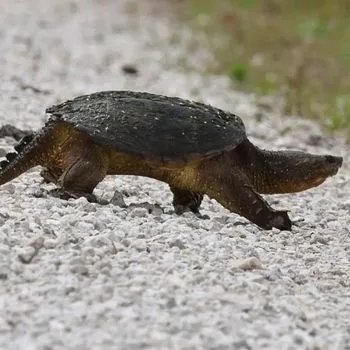 |
| 10 | Red Eared Slider (Trachemys Scripta Elegans) |
| 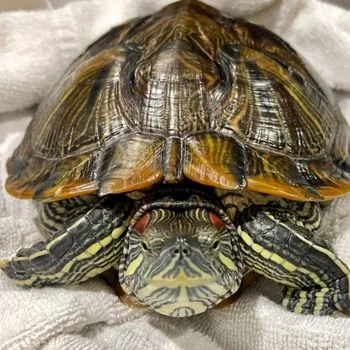 |
10 Turtles You Can Find in New Mexico
In total, there are 10 species of turtles in the state of New Mexico. This guide will take you on an exploration through each turtle type and provide tips for providing them with proper care. So, let’s get started on our journey into discovering all the wonders that these reptiles have to offer!
1. Big Bend Slider (Trachemys Gaigeae)
- Family: Emydidae
- Genus: Trachemys
- Type: Aquatic turtle
- Natural Habitat: Freshwater rivers, streams, ponds, and lakes in big bend region of texas and northern mexico
- Lifespan: 20 years
- Also Known As: Mexican plateau slider
- Maximum Size: 10-12 inches
- Prone to Diseases: Respiratory infections and fungal infections
- Aggression Level: Not aggressive but they may bite if they feel threatened
- Predators: Eggs and hatchlings are preyed upon by birds, mammals, and other reptiles
- Domestication: Can be kept as pets
The Big Bend Slider (Trachemys Gaigeae) is a species of freshwater turtles native to the Big Bend region of Texas and northern Mexico. This species is medium-sized, with adult females reaching around 10-12 inches in carapace length and males slightly smaller. These turtles can be kept as pets in New Mexico if given proper care. They are well adapted to their aquatic environment, with webbed feet and a streamlined carapace.
Big Bend sliders are not naturally aggressive but may bite if provoked or threatened. In the wild, they mainly feed on plants, worms and insects while adult sliders have few predators.
However, their eggs and hatchlings may be preyed upon by birds, mammals and other reptiles. If not kept in optimal conditions or allowed enough space to roam these turtles may become prone to illnesses such as respiratory infections or fungal infections.
Fortunately, this species is not endangered and it is found abundantly in New Mexico rivers, streams, ponds and lakes throughout the Big Bend region of Texas and northern Mexico.
However, it is illegal to take them from the wild, so they should only be kept as pets if they were purchased or adopted. With proper care and the right environment, these turtles can make lovely companions.
2. Ornate Box Turtle (Terrapene Ornata Ornata)
- Family: Emydidae
- Genus: Terrapene
- Type: Terrestrial turtle
- Natural Habitat: Open landscapes such as pastures, prairies, and lightly forested areas
- Lifespan: 30 – 40 years
- Also Known As: Western box turtle
- Maximum Size: 4-5 inches
- Maximum Weight: 1-1.5 pounds
- Prone to Diseases: Vitamin deficiency, respiratory diseases
- Disease Carrier: Salmonella
- Aggression Level: Males display a tendency towards aggressive behavior, including biting and clashing their shells against each other
- Predators: Birds, such as crows, raptors, and ravens; domestic cats and dogs; opossums; raccoons; skunks; snakes; and even adult box turtles
- Domestication: Can be kept as pet
Have you ever wondered what kind of magical creature might be lurking in the forests and wetlands of New Mexico? Well, say hello to the Ornate Box Turtle! This amazing animal is closely related to its box turtle cousins, but it can also be identified by its intricate patterned shell – hence its name.
With a small head and body covered in an ornately patterned carapace or upper shell that’s usually brown with yellowish-orange markings, these turtles stand out from the crowd.
It spends most of its time hiding under cover while searching for food such as snails and insects, often seen out on warm summer days. So next time you take a walk through New Mexico, keep your eyes open for the Ornate Box Turtle – after all, who knows what else might be living there!
3. Midland Smooth Softshell Turtle (Apalone mutica mutica)
- Family: Trionychidae
- Genus: Apalone
- Type: Freshwater turtle
- Natural Habitat: Slow-moving streams, rivers, lakes, and ponds in the midwestern and southeastern united states
- Lifespan: 25-30 years
- Maximum Size: 10 inches
- Prone to Diseases: Shell rot and respiratory infections
- Aggression Level: Mild, non-aggressive species
- Predators: Alligators, large fish, and snapping turtles
- Domestication: Can be kept in captivity
Native to the midwestern and southeastern United States, including New Mexico, the Midland Smooth Softshell Turtle (Apalone mutica mutica) is a majestic freshwater species.
With adults typically reaching 7-8 inches in length and some individuals even reaching up to 10 inches, these turtles weigh an average of 1-4 pounds with no significant size variations between males and females. They can be found in slow-moving streams, rivers, lakes, and ponds and display mild, non-aggressive behavior.
Despite not being commonly kept as pets, if taken into captivity they require proper care such as providing a balanced diet and a clean environment. Furthermore, they may be vulnerable to shell rot and respiratory infections if kept in unclean or poorly ventilated environments. Predation from alligators, large fish, birds of prey or raccoons may occur whilst eggs and hatchlings are prone to predation from skunks or other predators.
Although not currently listed as endangered by IUCN standards – populations of Midland Smooth Softshell Turtles may be declining due to habitat loss and collection for the pet trade.
These aquatic creatures are also found in Arkansas, Illinois, Indiana, Iowa, Kansas, Kentucky, Louisiana, Missouri , Mississippi , Ohio , Oklahoma , Tennessee ,and Texas. Respectful caution should also be taken when spotting a Midland Smooth Softshell Turtle since although rarely aggressive towards humans – they are still considered vulnerable according to IUCN standards and hence should not be disturbed needlessly even if encountered in nature during your visit at New Mexico.
4. Eastern Spiny Softshell Turtle (Apalone Spinifera)
- Family: Trionychidae
- Genus: Apalone
- Type: Freshwater turtle
- Natural Habitat: Slow-moving rivers, streams, ponds, and lakes with soft bottoms and abundant aquatic vegetation
- Lifespan: 30 to 40 years
- Maximum Size: 18 inches
- Maximum Weight: 12 lbs
- Prone to Diseases: Respiratory infections, shell rot, and pneumonia
- Aggression Level: Not aggressive, but will bite if threatened
- Predators: Raccoons, alligators, snapping turtles, otters, and larger fish
- Domestication: Not commonly kept as pets
The Eastern Spiny Softshell Turtle (Apalone Spinifera) is an incredible species of freshwater turtle found throughout New Mexico. With powerful legs for swimming and a streamlined shell, this impressive creature has adapted to its aquatic environment over millennia. Adults measure between 8-18 inches with males being smaller at 8-12 inches compared to10-18 inches for females, weighing from 4-12lbs respectively. Despite their small size they are surprisingly strong and have a bite force that can put unsuspecting predators on their guard!
Yet these turtles aren’t all aggression; they’re also known to be quite timid and shy when humans appear near them, preferring the safety of rivers, streams or lakes – where plenty of vegetation exists in soft bottomed areas – as habitats. Unfortunately however some populations have declined due to habitat loss or collection for pets so it’s important we do everything in our power to protect these creatures and maintain a healthy ecosystem here in New Mexico!
5. Sonora Mud Turtle (Kinosternon Sonoriense)
- Family: Kinosternidae
- Genus: Kinosternon
- Type: Mud turtles
- Natural Habitat: Fields, offshore islands, fresh or brackish water containing marshes, ditches that are wet, and tiny ponds.
- Lifespan: 10+ years
- Also Known As: Sonoyta mud turtle
- Maximum Size: 5 – 7 inches
- Maximum Weight: 10 to 30+ pounds
- Prone to Diseases: Vitamin deficiencies, metabolic bone disease, and intestinal parasites
- Disease Carrier: Salmonella
- Aggression Level: Aggerssive
- Predators: Bullfrogs, large fishes, alligators
- Domestication: Can be kept as pets
The Sonora Mud Turtle (Kinosternon sonoriense) is a small but resilient turtle native to the southwestern United States and northern Mexico. This incredible species lives in desert areas, streams, and ponds with their flattened shells allowing for easy aquatic adaptation.
Adult males usually measure up to 5 to 9 cm (2 to 3.5 in) from head-to-tail and females may appear slightly larger due to their longer shell. Unfortunately, activities such as habitat destruction have placed some populations of this beautiful species at risk of endangerment or even extinction in New Mexico.
With adequate protection however there’s hope for them yet – so let us take steps towards preserving these precious creatures! They are not known to be aggressive towards humans, but they do possess unique adaptations that help protect themselves from predators such as snakes or birds of prey by using powerful bites or retreating into their shells when handled unexpectedly.
Although it is illegal own a pet Sonora mud turtle in some states, if you are capable of providing special care and environment they can make fascinating pets too!
6. Yellow Mud Turtle (Kinosternon Flavescens)
- Family: Kinosternidae
- Genus: Kinosternon
- Type: Freshwater turtle
- Natural Habitat: Found in habitats ranging from slow-moving rivers to permanent ponds, including floodplain swamps and seasonal wetlands.
- Lifespan: 20 – 30+ years
- Maximum Size: 5 – 12 inches
- Maximum Weight: 10 – 35 pounds
- Prone to Diseases: Shell disease
- Disease Carrier: Salmonella
- Aggression Level: Not aggressive
- Predators: Raccoons, alligators
- Domestication: Can be kept as pets
The Yellow Mud Turtle (Kinosternon flavescens) is a remarkable creature, found in habitats ranging from slow-moving rivers to permanent ponds. This freshwater turtle is typically 5 to 12 inches long and can live up to 30 plus years! It has an interesting yellowish shell with black markings on its upper carapace that sometimes feature red or orange hues along the edges; making it stand out among other species of turtles.
Yellow mud turtles are not aggressive creatures, preferring solitude apart from mating season when we often find several males competing for the same female. These reptiles have many predators such as raccoons and alligators who prey on them easily due to their small size and lack of protection against enemies.
Sadly, this species faces endangerment in New Mexico due largely to destruction of its habitats which require conservation efforts if we wish future generations will enjoy seeing Yellow Mud Turtles back thriving in nature just like today!
7. Rio Grande Cooter (Pseudemys Gorzugi)
- Family: Emydidae
- Genus: Pseudemys
- Type: Aquatic turtle
- Natural Habitat: Freshwater wetlands
- Lifespan: Can live up to 60 years
- Also Known As: Gorzugi
- Maximum Size: Males: 11+ inches, females: 14+ inches
- Maximum Weight: 6 – 11 pounds
- Prone to Diseases: Metabolic bone disease and shell rot
- Aggression Level: Not aggressive
- Predators: Large fish, birds of prey, raccoons and snakes
- Domestication: Can be kept as pets
The Rio Grande Cooter (Pseudemys concinna) is a freshwater reptile native to New Mexico. It has an oval shaped carapace that is olive or brown in color, with yellow and/or reddish patches on its head. The males are generally smaller than the females, measuring up to 18-20 inches long when fully grown.
This species lives in slow-moving rivers, lakes and wetlands of the southeastern United States, where it feeds mainly on aquatic plants such as algae and vegetation found near water. They also consume insects and other small animals.
Rio Grande Cooters have strong webbed feet for swimming in their natural habitat but they can also be kept as pets if legal requirements are met. Proper care should always be taken into consideration as these reptiles are prone to shell rotting and respiratory infections when living under captive conditions.
Fortunately, this species has not been listed as endangered or threatened by the IUCN due to conservation efforts from authorities around the area where they live which will ensure we will keep enjoying seeing them bask under the sun for generations!
8. Western Painted Turtle
- Family: Emydidae
- Genus: Chrysemys
- Type: Aquatic turtle
- Natural Habitat: Likes bodies of water with soft mud floors and abundant aquatic plants, e.g. rivers, lakes, wetlands, oxbows, ponds, ditches, and reservoirs.
- Lifespan: Usually 20 – 30 years, but in better habitat can live up to 50 years
- Maximum Size: 4 – 6 inches
- Maximum Weight: Gets about 1 pound
- Prone to Diseases: Vitamin deficiencies, metabolic bone disease, and intestinal parasites
- Disease Carrier: Salmonella
- Aggression Level: Aggressive baskers
- Predators: Raccoons, skunks, foxes, herons, other birds, snakes, and large predaceous fish
- Domestication: Can be kept as pets
The Western Painted Turtle, scientifically known as Chrysemys picta bellii, is an aquatic creature native to North America. It can be found in states such as New Mexico; making its way up right into British Columbia in Canada. Adults typically measure between 9-10 inches in length while juveniles/hatchlings are smaller at around 2-3 inches.
They live in freshwater habitats such as ponds, rivers and lakes where they swim with ease due to their long tails and streamlined shells of webbed feet. Although usually not aggressive creatures, they have predators that include raccoons and herons among others which make them a species of special concern in some regions.
In most US states it is legal to keep Western Painted Turtles as pets with proper care but one should always check local regulations for necessary requirements first.
9. Common Snapping Turtle (Chelydra serpentina)
- Family: Chelydridae
- Genus: Chelydra
- Type: Freshwater turtle
- Natural Habitat: Freshwater habitats such as lakes, rivers, and swamps
- Lifespan: 50 years
- Maximum Size: 19 inches
- Maximum Weight: 40 pounds
- Prone to Diseases: Fungal infections and shell rot
- Aggression Level: Not aggressive until provoked
- Predators: River otters, bears and coyotes
- Domestication: Not recommended as pets
The Common Snapping Turtle, scientifically known as Chelydra serpentina, is an aquatic species native to freshwater habitats such as lakes, rivers and swamps. These turtles are highly adaptable and can live up to 50 years in the wild.
Adult Common Snapping Turtles typically measure 10-16 inches in shell length but can grow up to 19 inches and weigh around 40 pounds. They have a powerful bite with an estimated pressure of over 600 psi, making them one of the strongest biters among reptiles. Despite their strength they are generally not aggressive animals, though it is best to not provoke them and take caution around them.
Common Snapping Turtles often face threats from predators such as river otters, bears and coyotes when living out in the wild.
Unfortunately, their habitat is also threatened by human activities such as development and pollution which can lead to a decrease in population numbers if conservation efforts are not taken soon here in New Mexico.
Although they make fascinating pets due to their long lifespan of up to 50 years when cared for properly, some states have regulations or restrictions on owning them so check with local authorities before acquiring this species as a pet.
These turtles have webbed feet for swimming and a long tail for propulsion allowing them to move quickly through water which also makes them difficult prey for predators.
Furthermore, although they occupy multiple states across North America from Alabama to Wyoming there is no other name than the Common Snapping Turtle so it’s easy to identify.
It should be noted that this species does not carry any significant disease that can be transmitted to humans yet they may still be prone to diseases like fungal infections or shell rot when kept in unsanitary conditions so proper care must be taken here in New Mexico when considering owning one of these remarkable creatures as a pet.
10. Red Eared Slider (Trachemys Scripta Elegans)
- Family: Emydidae
- Genus: Trachemys
- Type: Aquatic turtle
- Natural Habitat: Streams, rivers, ponds, lakes, swamps, and marshes
- Lifespan: 20 – 30 years
- Also Known As: Red-eared terrapin
- Maximum Size: 7 – 12 inches, females get larger than 12 inches
- Maximum Weight: 3 – 6 pounds
- Prone to Diseases: Respiratory infections, shell rot, and other diseases if kept in unsanitary conditions.
- Disease Carrier: Salmonella
- Aggression Level: Not aggressive
- Predators: Raccoons, otters, fish, frogs, snakes, skunks and birds
- Domestication: Can be kept as pets
The Red Eared Slider (Trachemys scripta elegans) is a freshwater reptile with a striking appearance. Found in New Mexico’s waterways, these turtles can reach up to 10-12 inches long as adults and can live for an impressive 30 years. They have webbed feet that are adapted for swimming, making them incredibly agile aquatic creatures.
Males and females exhibit different size ranges, with males being more diminutive compared to the females and juveniles measuring only 2-3 inches when fully grown. Although they may take on aggressive postures if threatened, their bite force is not enough to cause any damage to humans or other larger animals.
It’s important that we respect the habitats of these amazing reptiles so that future generations will be able to enjoy them too – keep their environments clean by disposing of garbage properly and avoid disturbing the fragile ecosystems where they make their homes!
Final Words
In the state of New Mexico—a place rich in biodiversity—turtles play a significant role; with a variety of species dwelling in its forests, beaches, and rivers.
In this article, we took a closer look at these fascinating creatures (including their natural habitats, lifespan, size and weight, predators, and domesticability). It’s worth noting that, while keeping these turtles as pets is legal; their populations in New Mexico may be declining due to habitat loss and collection for the pet trade.
It is our responsibility to ensure that these turtles remain protected and preserved for future generations to enjoy in the state of New Mexico.
Other Nearby States:
What Are the Unique Characteristics of Turtles in New Mexico Compared to Turtles in Illinois?
When it comes to intriguing turtle habits in Illinois, compared to turtles in New Mexico, there are some unique characteristics to note. Firstly, while turtles in both states are known for their ability to retract into their shells, New Mexico turtles tend to have a more domed appearance compared to the flatter shells of Illinois turtles. Additionally, turtles in New Mexico are typically smaller in size, while their Illinois counterparts can grow larger.

